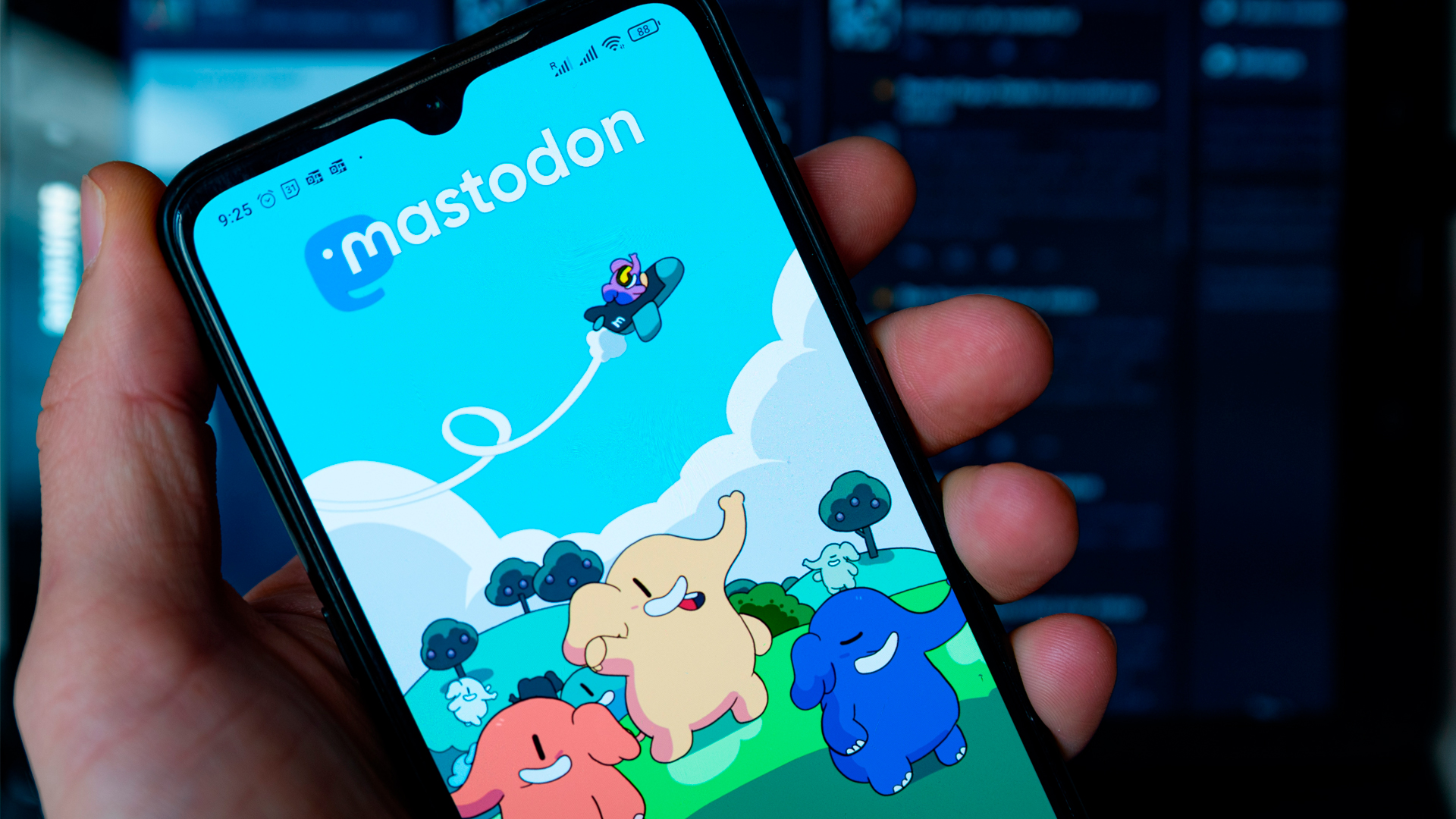How to switch from Twitter to Mastodon and use it on iOS, Android and more
If you've had enough of Twitter, Mastodon is a great alternative

Switching to Mastodon from Twitter may seem a little daunting at first because the two platforms work in very different ways. But from spending just a little time with Mastodon, you'll quickly discover an exciting new home, populated with many of the people you know from Twitter, and less of the drama.
A few on TechRadar have already registered their accounts and enjoying their time on some servers, especially with some new apps that have emerged due to Twitter banning third-party apps.
However, it could be a challenge to figure out how to use the platform, especially if you only use Facebook or Twitter sparingly.
With this in mind, we'll show you how to get started with Mastodon and - if you decide to - how to close down your Twitter account forever.
Tools and Requirements
- An internet connection
- An email address
- An available Mastodon Server
Step by step guide
1. Find a server

Mastodon is similar to Twitter in many ways, but there are also ways in which it differs. One of the biggest differences is the fact that rather than having one central controlling server through which users access the service, Mastodon is decentralized.
This means that there are a large number of independently run servers, often with a theme or topic that draws particular users. You can find a sizable list of servers by visiting the Mastodon site and clicking Create account. You can then browse through various categories and find a server that interests you - one of the biggest is mastodon.social.
2. Create a Mastodon account

You will then need to click either Create account or Apply for an account, and then click Accept to agree to the rules put in place by the server moderators. If you just had to click Create account for a particular server, you can then enter your details, choose your password and click Sign Up after agreeing to the privacy policy.
However, if you had to click Apply for an account, it means that there is a vetting process for members and you will have to provide a little information about why you want to join.
3. Complete your profile

Once you have confirmed your email address and your account has been created, sign in and you are ready to get started. A very good place to begin is by filling in your profile so that other users can find out a bit about you.
Click the Edit profile link and you can customize your display name, choose a photo and header picture, fill in your biography, and provide links to your other online accounts if you want. You can also use the Preferences section to configure numerous options to personalize your Mastodon experience.
4. Find people to follow

If you know someone's username (such as @sofia_w_w@mastodon.lol) you can type or paste this into the search box to the upper left of the page to just straight to their profile where you can click the Follow button.
You can also use the search box to search for people by name, or search for topics that interest you. In doing so, you can click the name of someone who has posted something that has grabbed your attention, and follow them if you want.
5. Enlist the help of Movetodon

To help make it is little easier to quickly locate and follow the people you used to follow on Twitter, you can use Movetodon. While this free service will not necessarily help you to find everyone you used to follow, as the site explains it helps to find people who have created Mastodon accounts and have added links to their Twitter profile.
Visit movetodon.org, click the Login button, and follows the instructions, starting by authorizing access to your accounts. You can then work through the list of accounts that are displayed and choose which you still want to follow.
6. Link your Twitter and Mastodon accounts

To help your old followers on Twitter to find you on Mastodon, it makes sense to edit your Twitter profile to include a link to your new account. This is something that you can do manually, but you can also use twittodon to create a verified link between your two accounts.
Pay a visit to twittodon.com and click the Connect Accounts button. You can then enter your Twitter username and Mastodon username, then follow the instructions for establishing a link between your two accounts.
7. Posting new content

In a lot of ways, Mastodon is very similar to Twitter; two key differences, however, are that you can write posts (or "toots") of up to 500 characters, and you have the option of editing what you have posted.
Write your post in the box What's on your mind? box to the left, keeping an eye on the character count. Emoji can be added using the button to the upper right, while at the bottom of the text box are buttons for attaching images, creating polls, adjusting post privacy settings, and adding a content warning for sensitive content.
8. Getting around Mastodon

The switch to Mastodon means getting used to a different layout and way of navigating things. There are various views available via the right-hand navigation bar. The Home view lets you use posts from the accounts you follow while clicking Local will show you posts from other people on the same server as you.
In the Federated section, you can see a wider selection of posts from your own and other servers, and this can be a good way to find people to follow. Click Explore to browse hashtags, trending topics and suggested content.
9. Backup your tweets

Although there is no way to move your tweets from Twitter to Mastodon, you may still want to back them up so you can refer to them in the future. Log into your Twitter account, click the More link to the left, and select Settings and Support > Settings and Privacy.
In the Your Account section, click the option labeled Download an archive of your data, enter your password and confirm your identity. Click Request archive and you will -- after a short delay -- be provided with a compressed Zip file containing your account archive.
10. Close your Twitter account

If you decide to make a permanent move from Mastodon to Twitter you may want to close down your Twitter account completely. Log into your Twitter account, click the More link to the left and select Settings and Support > Settings and privacy.
In the Your Account section, click the Deactivate your account option and you can then choose a grace period of either 30 days or 12 months within which you will be able to reactivate your account. Click Deactivate and if you do not then choose to reactivate, your account will be deleted at the end of the reactivation period.
Final Thoughts
Whether you have decided to leave Twitter because you are unhappy with the way the social platform has changed under Elon Musk, or you are just ready for a change of scene, it is pleasingly simple to get started on Mastodon. There are some fairly major differences between the two platforms, however, and this might mean that you want to use the two in tandem -- and this is absolutely fine.
But Mastodon is certainly not the only alternative to Twitter; there are various other social platforms to choose from. Two names worthy of consideration are CounterSocial and WT.Social. CounterSocial prides itself on many things including no advertising and no fake news.
There is a zero-tolerance policy on abuse and trolls, and various countries are blocked from accessing the service if they are deemed to be dangerous on social platforms. WT.Social is the work of Jimmy Wales, the co-founder of Wikipedia. The approach taken by the site is different from other social platforms, building on the idea of Wikipedia with clear sourcing given to help combat fake news.
Get daily insight, inspiration and deals in your inbox
Sign up for breaking news, reviews, opinion, top tech deals, and more.

Sofia is a tech journalist who's been writing about software, hardware and the web for nearly 25 years – but still looks as youthful as ever! After years writing for magazines, her life moved online and remains fueled by technology, music and nature.
Having written for websites and magazines since 2000, producing a wide range of reviews, guides, tutorials, brochures, newsletters and more, she continues to write for diverse audiences, from computing newbies to advanced users and business clients. Always willing to try something new, she loves sharing new discoveries with others.
Sofia lives and breathes Windows, Android, iOS, macOS and just about anything with a power button, but her particular areas of interest include security, tweaking and privacy. Her other loves include walking, music, her two Malamutes and, of course, her wife and daughter.
- Daryl BaxterSoftware & Downloads Writer